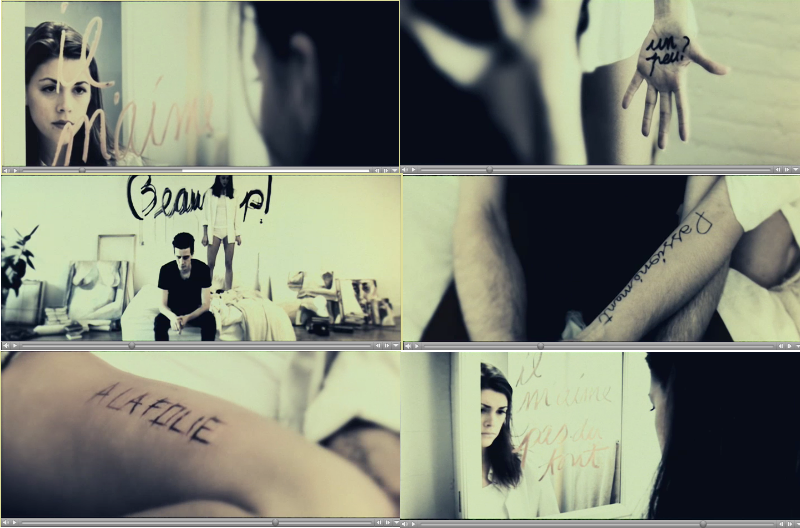Lyrics can be used to establish the general mood and feeling of the subject, and tempo often drives the pace of editing. For example, The Quiet Things That No One Ever Knows by Brand New has a majoritally fast pace, to which the editing of the music video matches using fast cuts between the scenes of the story and also the band singing, with various angles used within these scenes. As the song slows, so does the editing pace. As quite a dark, alternative rock band, the genre of the band and the reflective lyrics of the song set the tone for the video which is quite dark and alarming involving the death of a young man's girlfriend. Although the video does not directly mirror the actions or story of the lyrics, the lighting and subject of the video matches the intended atmosphere created by the music.
The genre of the music is reflected in music videos, for example Girlfriend by Avril Lavigne is that of punk princess girl power and the video reflects this as the characters fight each other over a boy.
The bright colours used in Avril Lavigne's video implement happiness and emphasise the mocking style of the video, whilst the frequent use of bright pink emphasises the "girl power" aspect of this genre, with the pink banners mixed with "punk" symbols to also portray rebellion and dismissal of expectations - all ideas Avirl Lavigne's predominantly female and young teenage audience will relate to and engage with.
Another convention that often appears in music videos is the use of choreographed dance routines, an example demonstrated in Beyonce's Single Ladies video. This video also demonstrates the frequent objectification of women often found in all visual media, including music videos, referring to the way she and her dances are dressed. However, the strict black and white colour code of the video portrays sophistication, and the song subject and confident routine also shows female independence and security; a relatively modern concept in gender equality that is now evident in all aspects of life.



